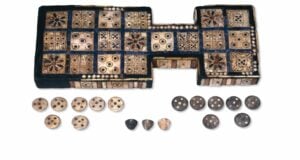Santa Claus, Father Christmas, Saint Nicholas – they are just a few of the different names to describe the jolly man who has come to personify Christmas. But every hero needs a nemesis. In Central Europe, there are characters and creatures dating back centuries who make the Grinch seem rather friendly.
These are some of the best.
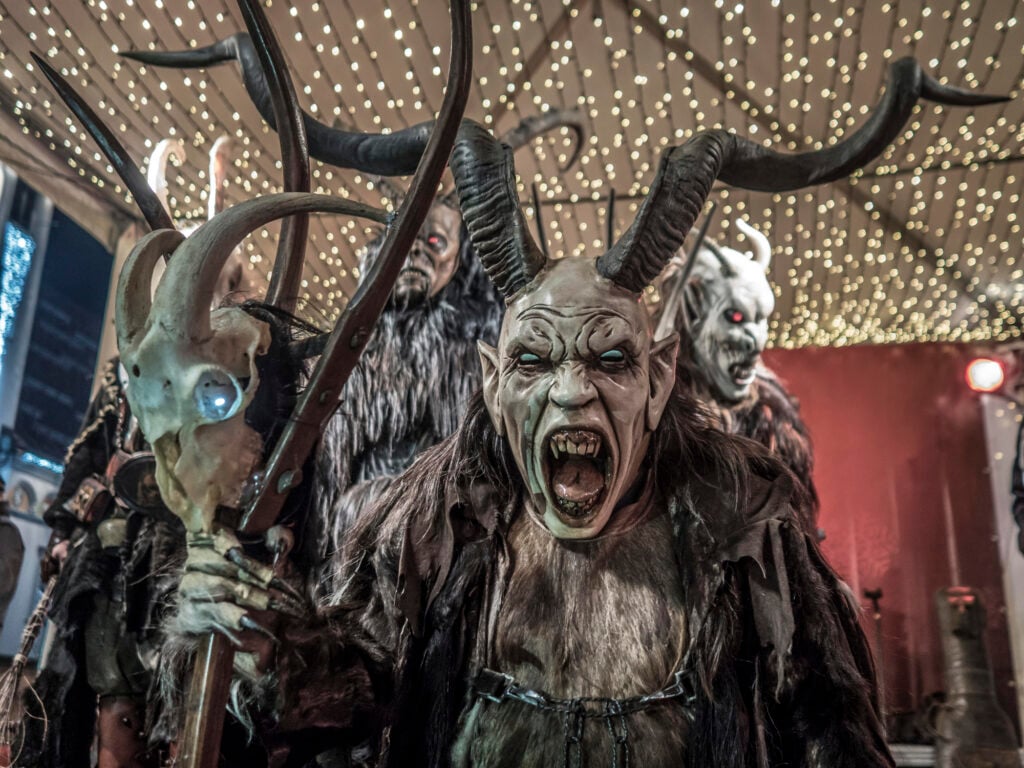
From a very young age, many of us encounter the rather terrifying idea of Santa’s naughty and nice list. Behave well for the year and you’ll be rewarded bountifully. Behave badly and you will receive coal. It’s a clever ploy from parents to control their children. What better way to make people fall into line than by instilling the fear of a vague, all-knowing, all-seeing moral arbiter?
In some cases, it’s a lot more terrifying than just receiving a big bag of coal. Many European countries have legends of Christmas bogeymen. The retribution of these creatures varies from full-blown cannibalism to figures who travel with Santa as he gives out presents, threatening and punishing children who have not lived up to Santa’s standards.
Let’s start with Krampus. He is perhaps the most famous of this evil clan. The horned beast hails from the eastern Alpine region of Tyrol, and is now most commonly celebrated in modern-day Austria, but Krampus has become a global export. He’s even got his own night: Krampusnacht.
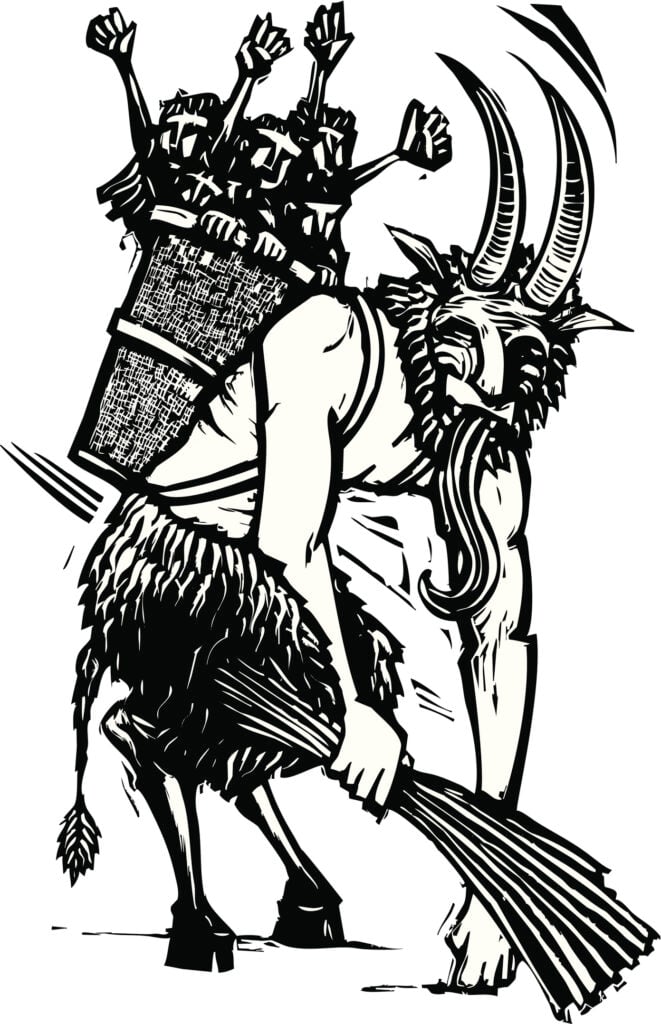
In Tyrol, the origins of a Krampus-like spirit go back at least 1,000 years, but he can be traced directly to the 16th century. He was raised as Saint Nicholas’ hellish companion, a festive devil to test the faith of good Catholics during the time of the Counter-Reformation. Still, to this day, Krampus costumes have heavy chains to symbolically attach him to the Catholic Church.
The modern appearance of Krampus began to adorn postcards in Austria in the 19th century. Resembling a sort of demonic goat, he carries a basket and wears bells as well as chains. His main target is children. They are either thrown in the basket or hit with Krampus’ stick.
His name is more recent than that. Derived from the German verb “to claw,” the word is not used universally by locals and has become more popular as the Krampus brand has spread around the world.

Krampusnacht is celebrated on December 5th. It sees adults dress up in their Krampus gear and parade through towns, seeking out naughty children.
Another merchant of festive doom is called Hans Trapp. Mainly based in Germany, Trapp is a scarecrow and not a very nice one either. It all began in the 1400s, with a rich, powerful man who lived in the Alsace region. All the money and power he had was not enough for him, and he started to literally deal with the Devil, his greed knew no bounds. But news of Trapp’s antics made its way to the Pope, who banished Trapp from Alsace and confiscated his wealth and lands confiscated.

Trapp built a makeshift home in the Bavarian mountains, still plotting his evil plans, eventually culminating in the desire to eat human flesh. In the disguise of a scarecrow, he waited on the lonely roads around Christmas, looking for suitable victims.
One day, a ten-year-old boy came across the scarecrow. Trapp stabbed the boy with a stick and brought him back to his house, where he sliced up the child and cooked him. But before he could eat, he was struck and killed by a bolt of lightning. The fear of the Trapp treatment is instilled in children to this day, with the threat of being roasted on Trapp’s spit looming over mischievous youngsters.
Read More: The city where everyone lives under one roof
At the other end of the Alps from Krampus, Switzerland and France share a mythical grinch of their own, also rooted in religious tradition. In France, he is called Père Fouettard, and Schmutzli in Switzerland. He also seems to go by Knecht Ruprecht in Germany (as know, he’s not Germany’s only festive villain), though there are slight differences between these characters, and local customs and traditions vary.
Père Fouettard’s name literally translates as ‘whipping father’ or father flog’, and he’s both a butcher and a cannibal. He looks a little worse for wear – he has a big, dark beard and a ragged robe, and often carries a meat cleaver.
Unsurprisingly, the embodiment of the dark side during French festivities dates back to a similar time as Krampus. In 1552, Charles V, King of Spain and Emperor of the Holy Roman Empire, laid siege to the French city of Metz. Citizens in neighboring Lorraine created an effigy of the Spanish king, and marched it through the streets before burning it. This became Père Fouettard.
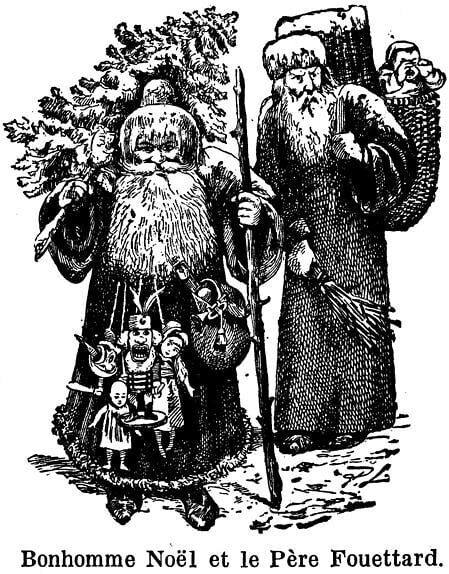
It’s not quite clear when he became a butcher and a cannibal. It seems to be through fusing Père Fouettard with another strange tale about a man called Pierre Lenoir (or Peter Black). Lenoir chopped up three children and left them to marinate in a giant tub of salt. After seven years, the holy Saint Nicholas knocked on the door, looking for food. Lenoir could not bring himself to serve Saint Nick the children and said he had no food. St Nicholas knew about Lenoir’s crime all along, and he resurrected the boys, returning them to their families.
Nicholas became the holy saint of Christmas and in the combination of Lenoir and Fouettard, he had his devilish, cannibalistic sidekick.
And finally, we’ve got a Frau Perchta, the Austrian Christmas witch. Dating back to ancient pagan religions, Perchta is also known as the spinning room lady. She has a beaked nose, is dressed in worn-out rags, and carries a long knife. During the cold winter months, she roams the countryside entering homes, especially on Twelfth Night.
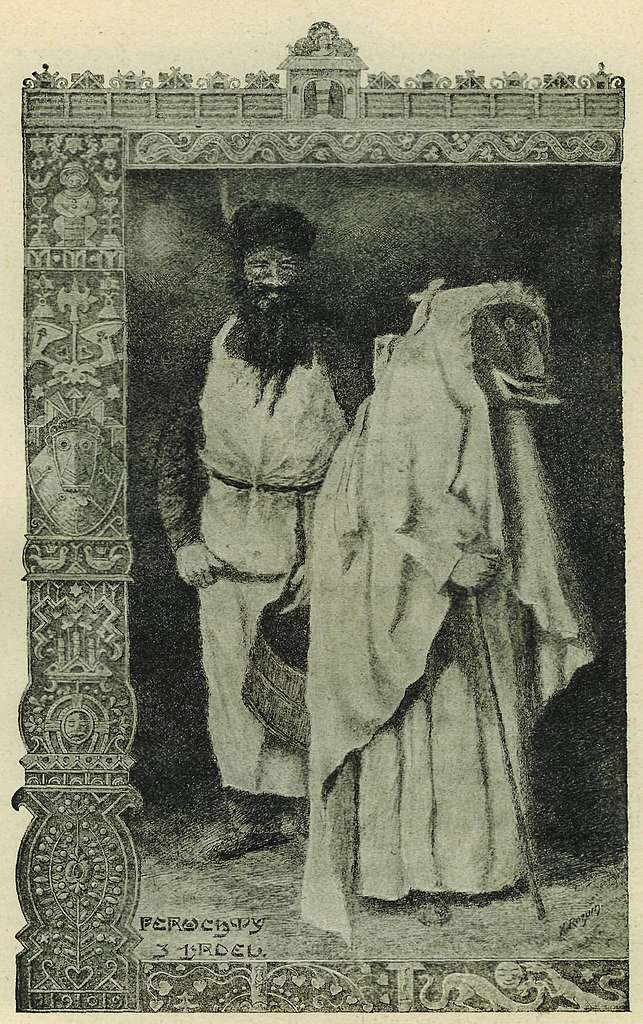
It’s the same gist as the others: she knows when the children are naughty and when they’re well-behaved. The good kids would get a silver coin. The bad children would – warning, this is quite violent – have their bellies cut open. Perchta would then remove their stomach and guts, and replace them with straw and pebbles. This same fate would befall people who ate anything other than the fish and gruel on the feast of the Twelfth Night.
Frau Perchta is also said to like everything neat and tidy when she visits. Dirt is a sign of laziness, the legend says, so make sure you’ve cleaned up after the Christmas festivities.





